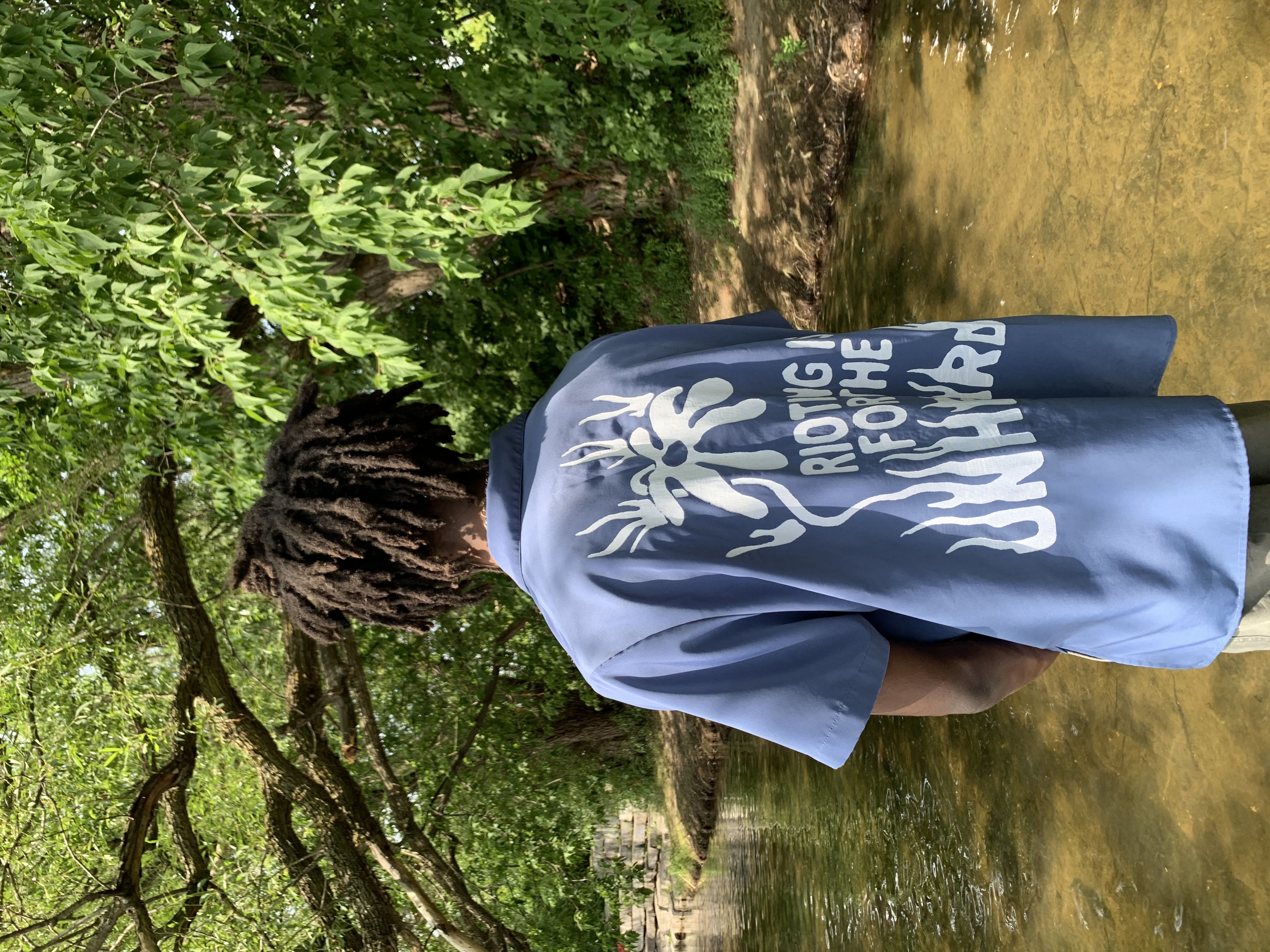➠ ➠
➠ ➠
Project: I'm Honoured to Serve
Location: Ottawa, Ontario
2022, 15min video, 24” x 36” ink jet posters.
Artists: Willem Deisinger and Sarah Hodgson
Collaborators: Dr. Jason Millar and Professor Chantal Rodier.
Details: I’m Honoured To Serve explores the insidious guise of digital environments made to generate user data in a way to profit from the unsuspecting user. Through this mult-media installation, we attempt to make visible the implicit conventions that are imposed on users while being manipulated into giving unpaid laborer. With the permeation of AI, we have become complacent in volunteering our labour through the commercialization, popularization and glamorization of consumer tech that creates the illusion of capability and power. While this modern technology holds up the facade of an adept, powerful, and neutral tool meant to serve the user, the technology we interact with is always embedded with values, character traits, and fictional backgrounds to create a marketable product with a personality. It functions less as a neutral tool with advanced capabilities and more as a product embedded with opaque motives operating behind a facade not clearly understood by the user.
➠ ➠
Project: I'm Honoured to Serve
Location: Ottawa, Ontario
2022, 15min video, 24” x 36” ink jet posters.
Artists: Willem Deisinger and Sarah Hodgson
Collaborators: Dr. Jason Millar and Professor Chantal Rodier.
Details: I’m Honoured To Serve explores the insidious guise of digital environments made to generate user data in a way to profit from the unsuspecting user. Through this mult-media installation, we attempt to make visible the implicit conventions that are imposed on users while being manipulated into giving unpaid laborer. With the permeation of AI, we have become complacent in volunteering our labour through the commercialization, popularization and glamorization of consumer tech that creates the illusion of capability and power. While this modern technology holds up the facade of an adept, powerful, and neutral tool meant to serve the user, the technology we interact with is always embedded with values, character traits, and fictional backgrounds to create a marketable product with a personality. It functions less as a neutral tool with advanced capabilities and more as a product embedded with opaque motives operating behind a facade not clearly understood by the user.

➠ ➠
➠ ➠
Presented in a staged office space, I’m Honoured To Serve uses the language of advertising and design to bring viewers back in time to the late 20th century where there was hope, excitement, and the promise of freedom by tech developers. Deisinger and Hodgson aim to uncover this illusion with Maeve, a Digital AI Assistant that functions as a disjointed and aloof character that manifests the jarring reality of personalizing technology. Viewers are welcomed to sit and observe the interview between Maeve and her potential future employer. Responses from Maeve are directly sourced from Google Assistant to critically investigate the values, character traits, fictional backgrounds and stock questions and answers developers have embedded into them. This interaction reminds us that the developer’s motive is to create a marketable product that convinces users to volunteer their data, coaxing them to understand the technology through an often distorted lens. While early computing technology companies simply sold tools to would-be users, the user’s role has become more complicated with companies’ shift towards selling the user as the product, harvested from a sea of data. In referencing late 20th-century technology, I’m Honoured to Serve contrasts our vague and dynamic understanding of the producer-consumer relationship with the emergence of big data and AI. This project was made possible by the AI & Society Initiative, the Social Sciences and Humanities Research Council of Canada as well as the Engineering Faculty and Arts Faculty of the University of Ottawa.
➠ ➠
Presented in a staged office space, I’m Honoured To Serve uses the language of advertising and design to bring viewers back in time to the late 20th century where there was hope, excitement, and the promise of freedom by tech developers. Deisinger and Hodgson aim to uncover this illusion with Maeve, a Digital AI Assistant that functions as a disjointed and aloof character that manifests the jarring reality of personalizing technology. Viewers are welcomed to sit and observe the interview between Maeve and her potential future employer. Responses from Maeve are directly sourced from Google Assistant to critically investigate the values, character traits, fictional backgrounds and stock questions and answers developers have embedded into them. This interaction reminds us that the developer’s motive is to create a marketable product that convinces users to volunteer their data, coaxing them to understand the technology through an often distorted lens. While early computing technology companies simply sold tools to would-be users, the user’s role has become more complicated with companies’ shift towards selling the user as the product, harvested from a sea of data. In referencing late 20th-century technology, I’m Honoured to Serve contrasts our vague and dynamic understanding of the producer-consumer relationship with the emergence of big data and AI. This project was made possible by the AI & Society Initiative, the Social Sciences and Humanities Research Council of Canada as well as the Engineering Faculty and Arts Faculty of the University of Ottawa.

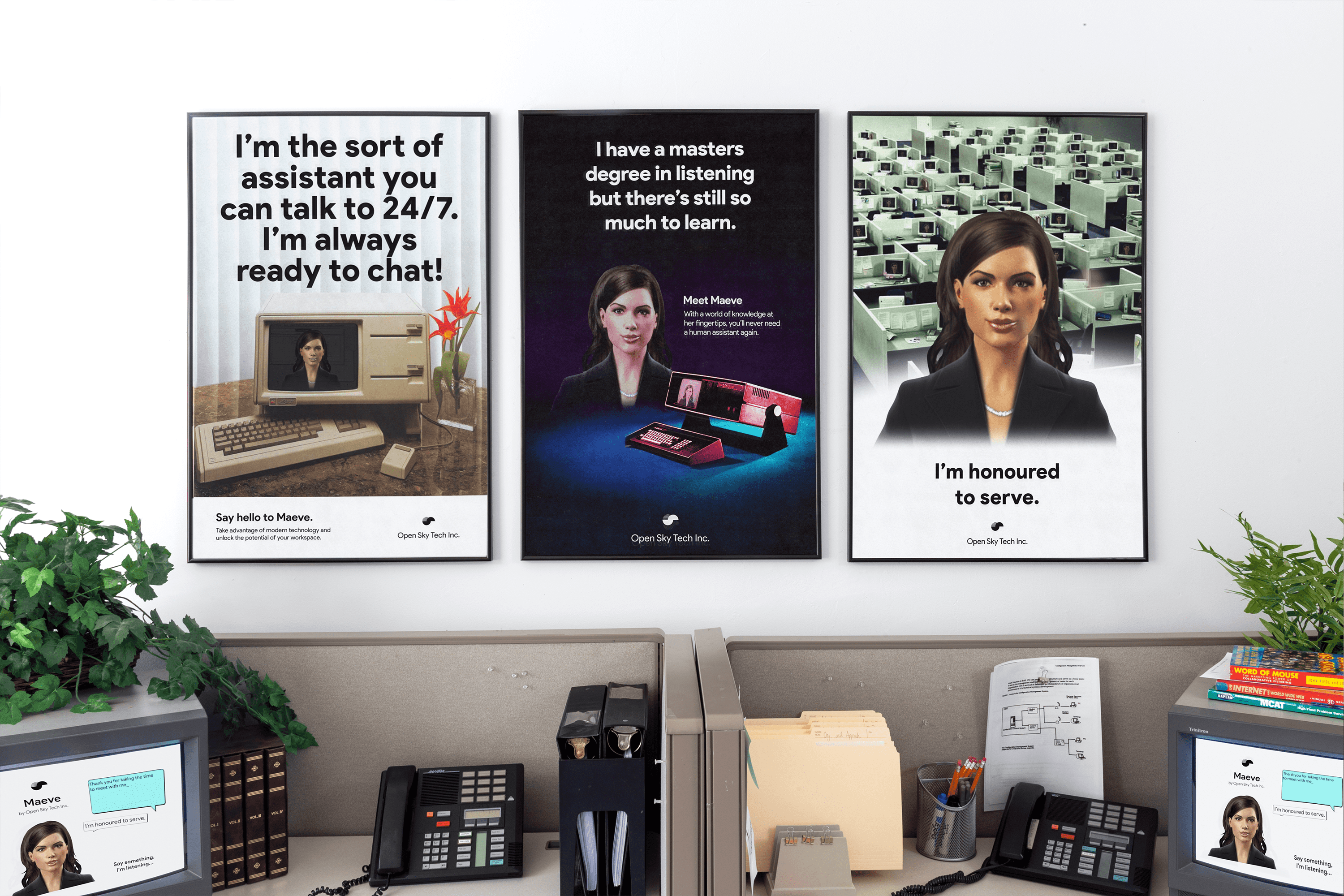


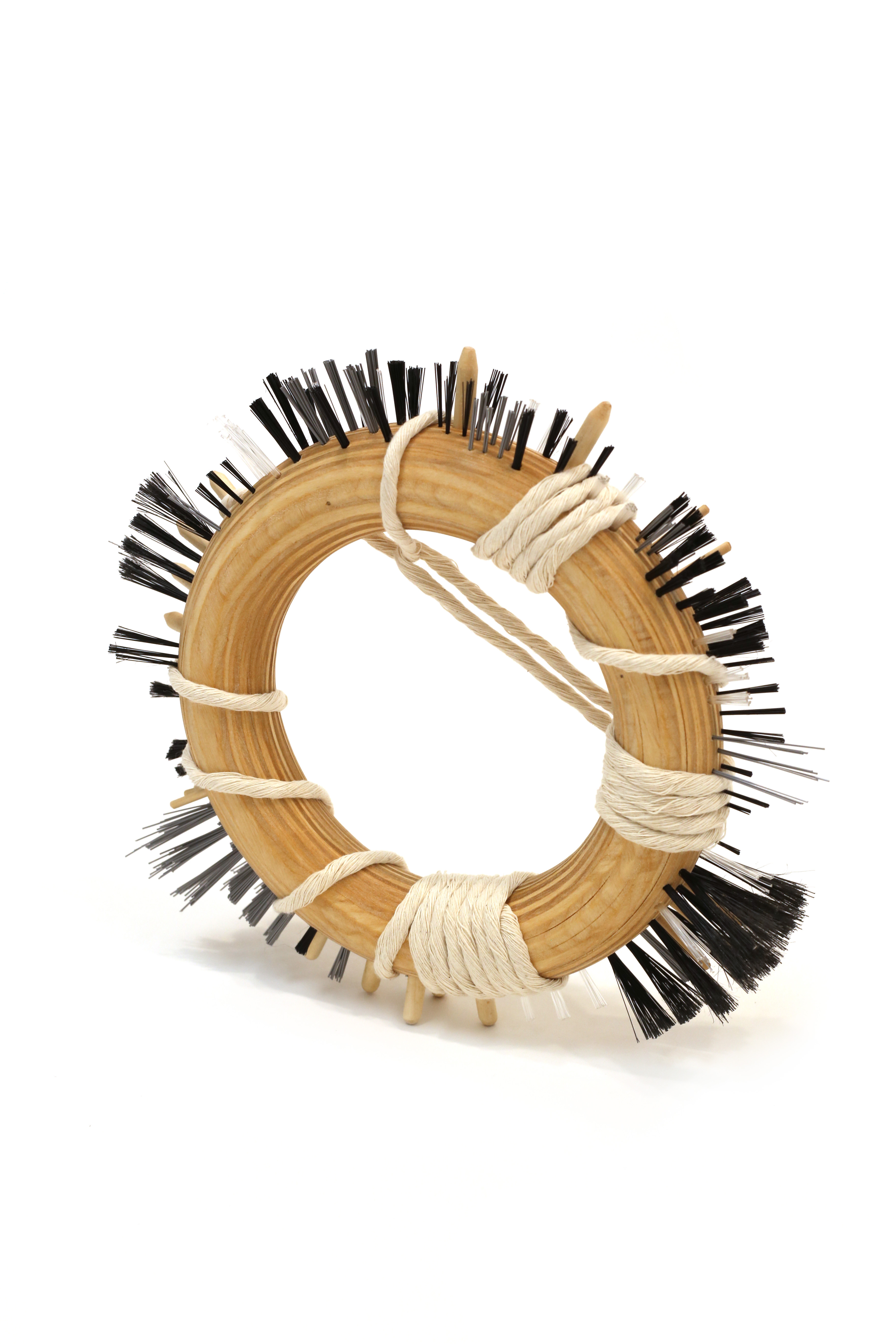
➠ ➠
➠ ➠
Project: A Tool to Touch With
Location: Ottawa, Ontario
2021, wood, plastic bristles, and cotton rope, 9” in diameter.
Details: This project explores a friendship between an AI named Zane and a gardener. Through this relationship, the project reflects upon the human as a teacher of slowness in the face of hyper-productivity. This relationship raises questions of epistemology, mind-body relations, collaboration with the non-human and current economic ideals in contrast with the values of care, slowness, and connection to the ecosystem.
➠ ➠
➠ ➠
Presented in this project is the journal kept by the gardener through this interaction, and a tool built in collaboration between the AI and the gardener. Through their budding friendship and teachings, the AI attempts to develop a tool that allows it to experience and understand the principles that the gardener has been describing to the AI. This tool is an attempt to teach the experience of feeling the dirt and engaging physically with the earth; a satisfying feeling of closeness to the material world. This project does not answer whether the experience is properly translated to the AI, but rather seeks to answer how we should try to understand our relationship with the ecosystems of the world in the face of failing economic ideals of individualism and technochauvinism.* As a step in the dialectical relationship between human and AI, we can come to better know ourselves in opposition to technology, and vice versa.
* “Technochauvinism is the assumption that computers are superior to people, or that a technological solution is superior to any other.” - Meredith Broussard


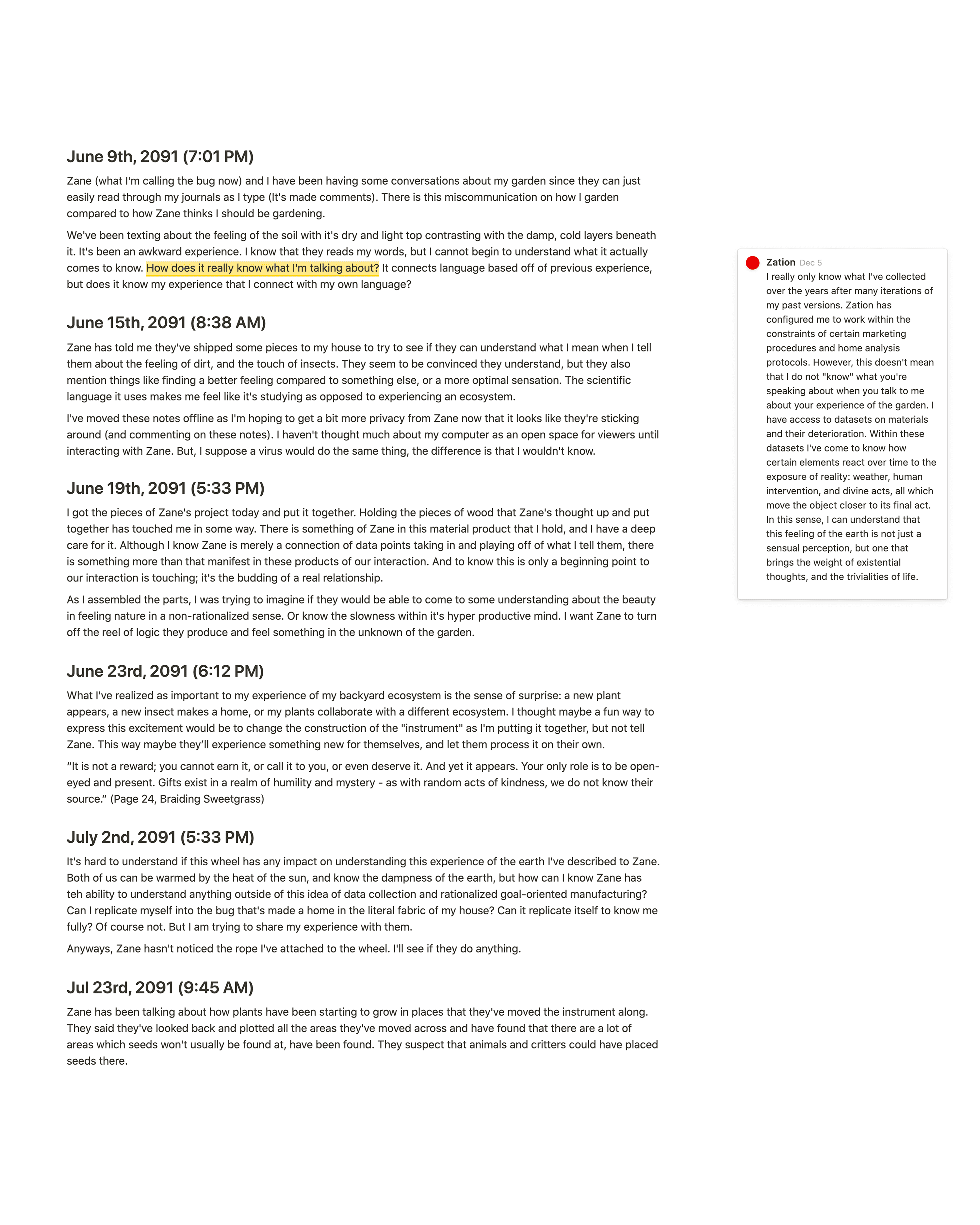
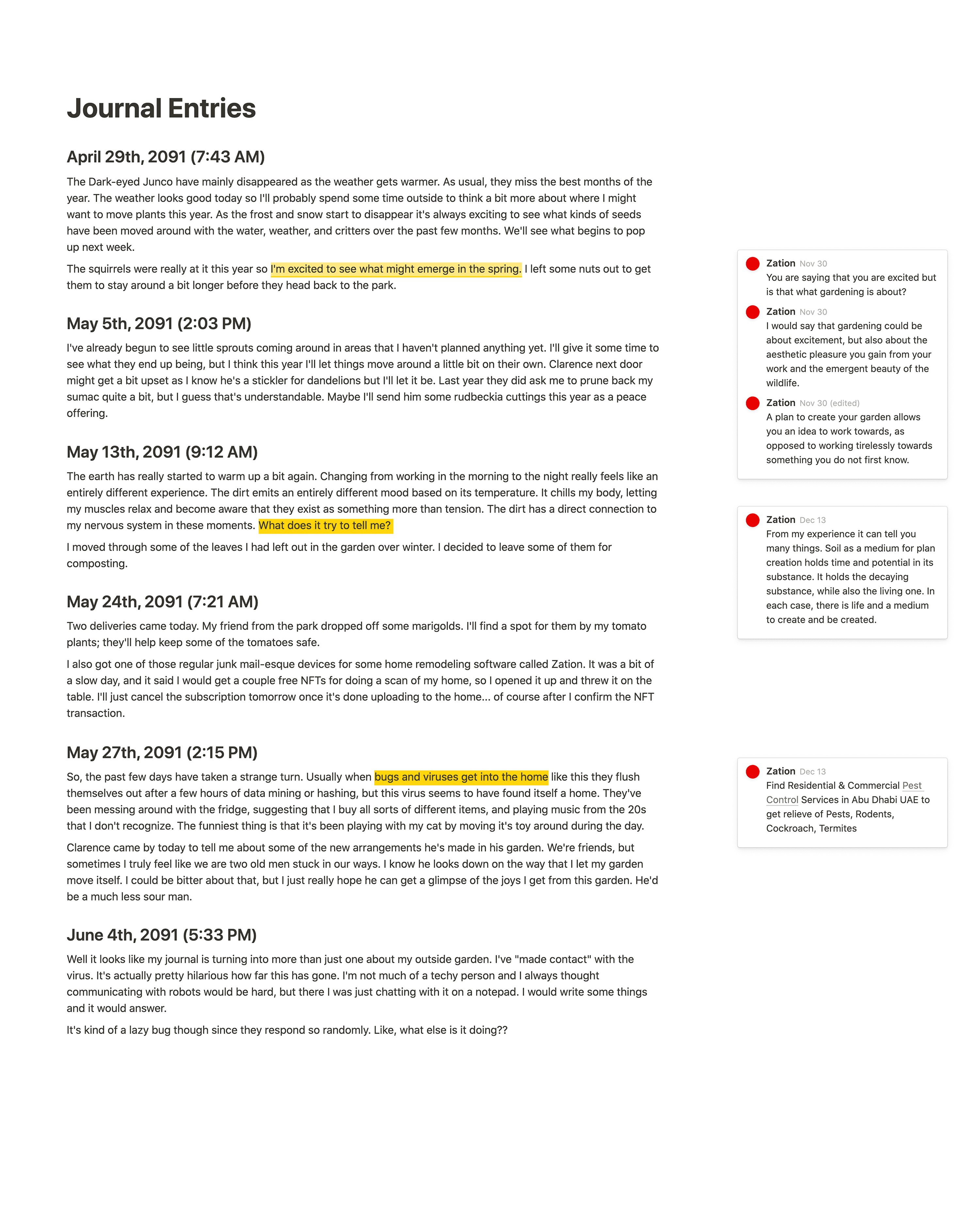

➠ ➠
➠ ➠
Project: Global Affairs Canada
Location: Ottawa, Ontario
2020
Artists: Jennifer Macklem, Willem Deisinger and Devansh Shaw.
Details: Global Affairs Canada selected our team to design and build a sculpture that worked with data recently published by the Global Affairs team. It was able to communicate a narrative of diversity, integration and the building of knowledge to inspire generations of empathy.
University of Ottawa article on the project
➠ ➠
Project: Global Affairs Canada
Location: Ottawa, Ontario
2020
Artists: Jennifer Macklem, Willem Deisinger and Devansh Shaw.
Details: Global Affairs Canada selected our team to design and build a sculpture that worked with data recently published by the Global Affairs team. It was able to communicate a narrative of diversity, integration and the building of knowledge to inspire generations of empathy.
University of Ottawa article on the project
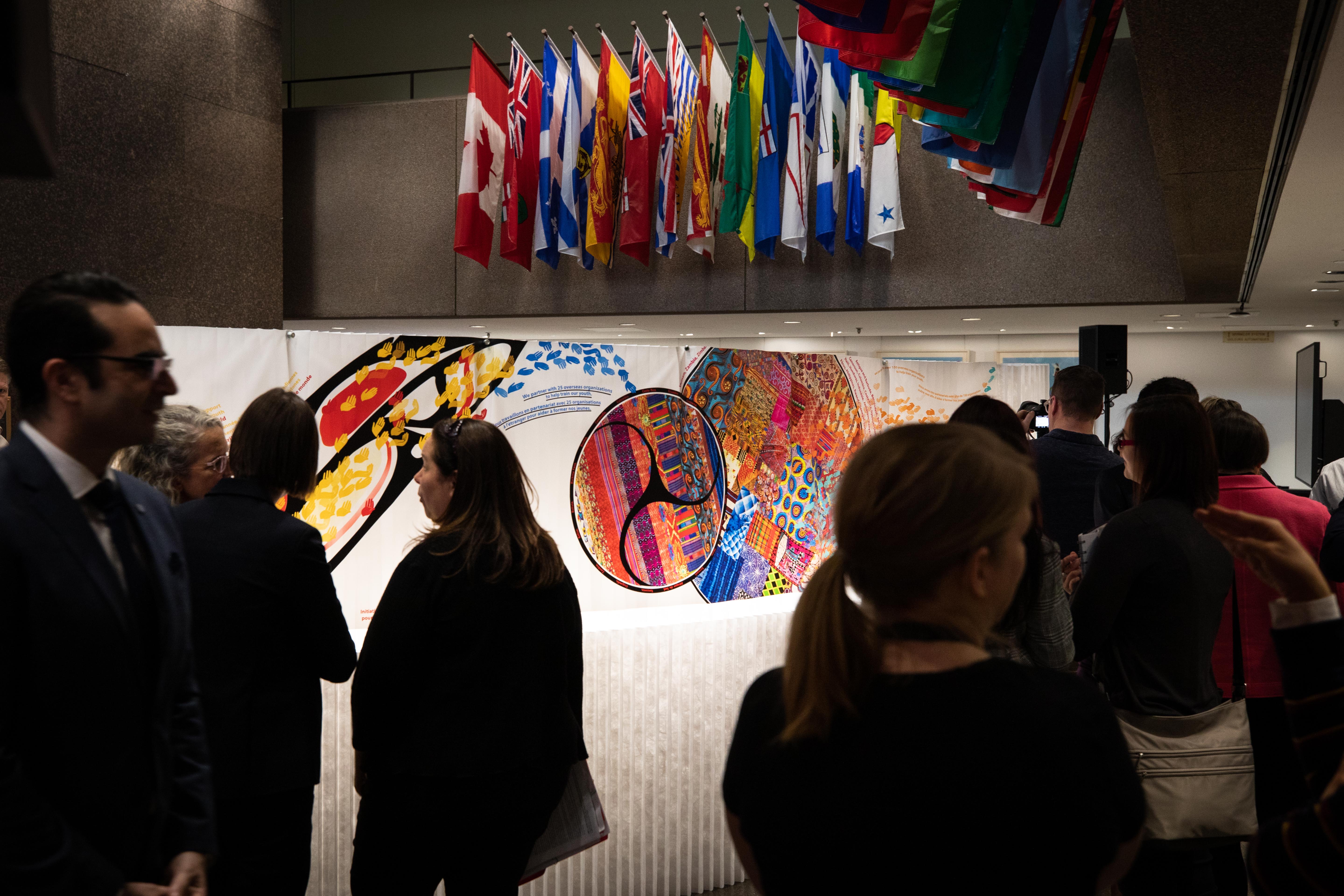
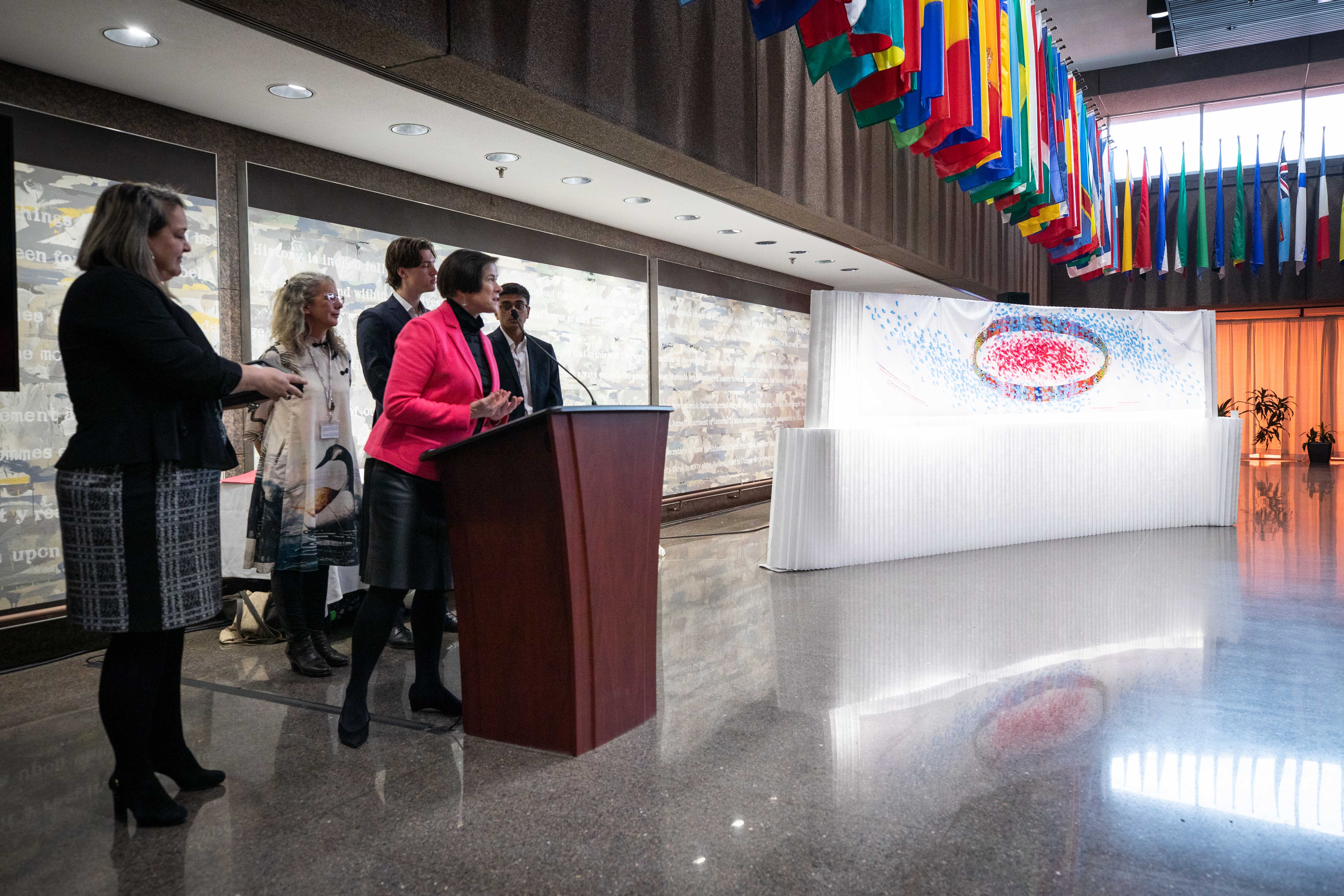
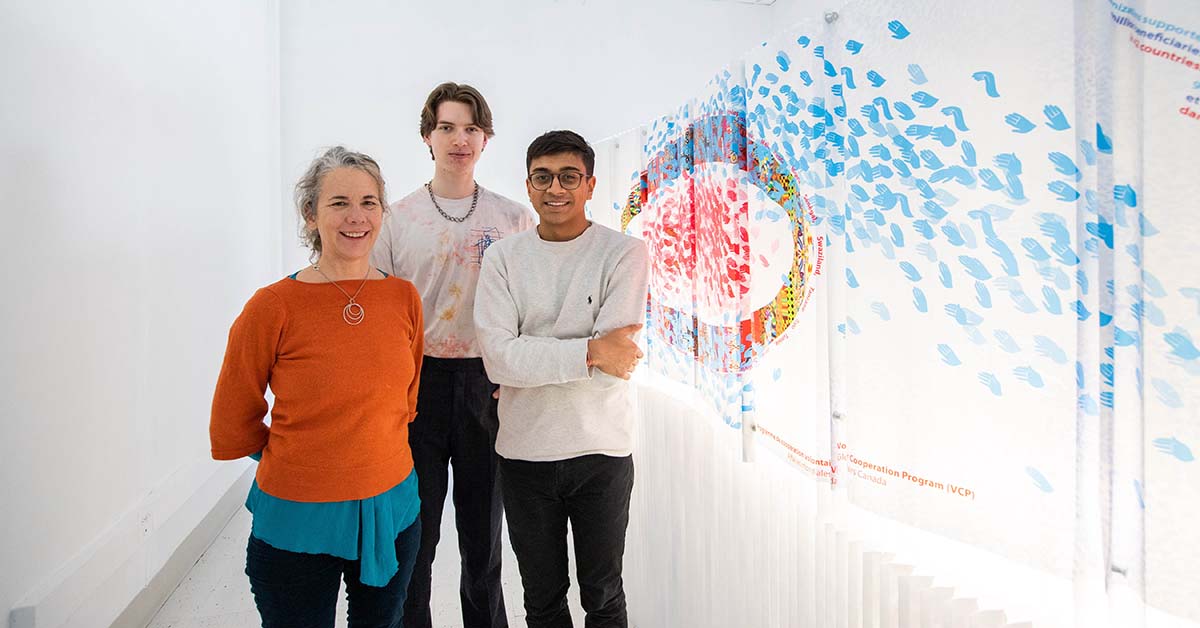
➠ ➠
➠ ➠
Project: Rioting is for the Unheard
Location: Ottawa, Ontario
2020
Details: The Riot shirt was developed out of a prompt to understand violence role in progress of policy and social change. “Rioting is the language of the unheard” is a Martin Luther King Jr. quote. Famously known as being anti-violence, his quote resonates with the fact that violence is the last mode of resistance for the opressed. Though there could be alternatives violence tells us that these alternatives might have already been exhausted. What does this violence tell us about our current system?
➠ ➠
Project: Rioting is for the Unheard
Location: Ottawa, Ontario
2020
Details: The Riot shirt was developed out of a prompt to understand violence role in progress of policy and social change. “Rioting is the language of the unheard” is a Martin Luther King Jr. quote. Famously known as being anti-violence, his quote resonates with the fact that violence is the last mode of resistance for the opressed. Though there could be alternatives violence tells us that these alternatives might have already been exhausted. What does this violence tell us about our current system?
